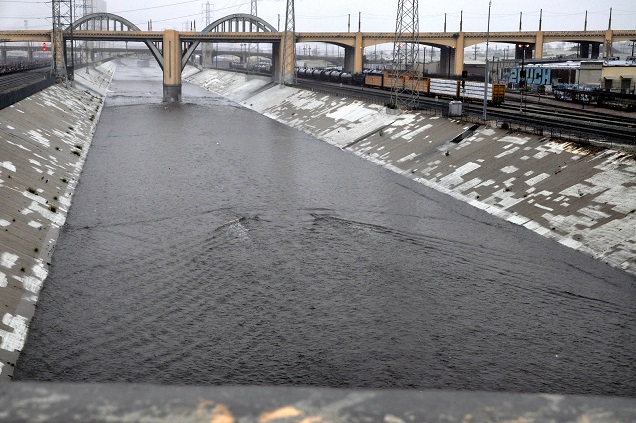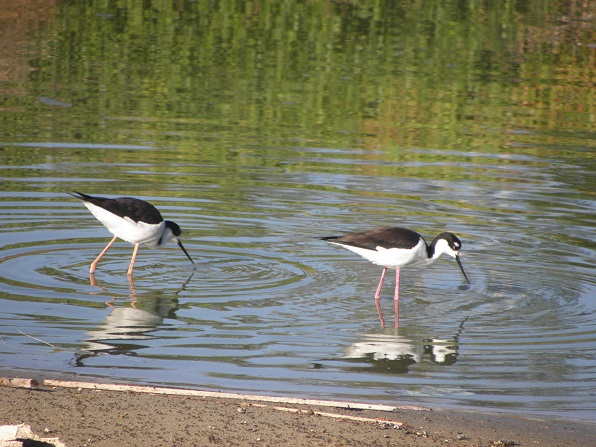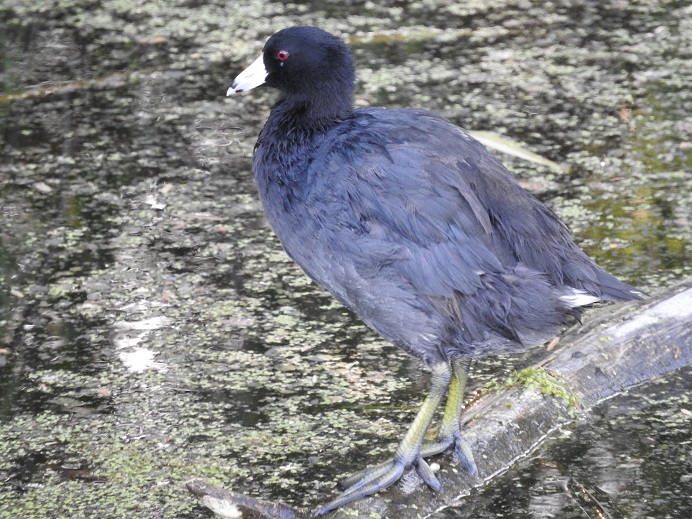
Flood events that occurred between 1914 and 1934 were some of the most economically devastating floods the Los Angeles area historically experienced. These flood events prompted the Federal Government to allocate funds in the Flood Control Act of 1936 to assist Los Angeles County in developing and expanding flood control infrastructure, including channelizing 52 miles of the Los Angeles River (LAR). Construction of the channel occurred between 1936 and 1959. The flood control channel is owned by Los Angeles County, City of Los Angeles, and private land owners. In 1940, the Army Corps of Engineers entered into an agreement with Los Angeles County to operate and maintain the portion of the channel from Lankershim Boulevard to Stuart and Grey Road which equates to 22.5 miles of the LAR channel. The Corps maintenance area consists of two different channel styles: rectangular or trapezoidal concrete/grouted stone with a low flow channel, and a trapezoidal soft bottom channel with grouted stone/concrete levees. The soft bottom portion of the channel is locally known as the Glendale Narrows, starting 1,400 feet North of Riverside Drive Bridge and ending at Idell Street. Within the area known as Glendale Narrows, there are 6.43 miles or 124.50 +/- acres of stabilized soft bottom structure.
Safety First
Keep yourself safe when visiting the Flood Control Channel; do not enter the Channel. Water in the LAR Flood Control Channel can rise suddenly without warning, even on a clear, sunny day. Other portions of the watershed may be receiving heavy rainfall, while the Glendale Narrows area is clear and dry. Simply checking the local weather forecast is not a recipe for safe recreation within the Flood Control Channel. To maintain your personal safety and the safety of others, only use designated walking/biking paths on top of the Flood Control Channel’s structures.
Maintenance Activities
A number of routine maintenance activities occur within the 22 miles of Corps maintained LAR Flood Control Channel, as well as additional localized projects in portions of the channel. Information on localized projects can be found on the Active and Upcoming Projects page. Routine maintenance activities include the removal of trash, debris, and graffiti from the channel. Each year, the Corps removes around 160 cubic yards of trash and debris from this 22 mile area. The Corps also removes sediment buildup on concrete portions of the channel to release shoaling and allow the water to freely flow through the system, as well as remove vegetation growing through cracks and joints in the concrete portions of the channel to maintain the channel’s structural integrity.
Environmental Resources

Originally devoid of vegetation and sediment subsequent to completion of construction in 1959, the project reach was periodically cleared of vegetation and sediment by the Corps until the 1980s. Once vegetation management and sediment removal activities stopped, the Glendale Narrows area built up sediment shoaling which gradually became vegetated. Vegetation within the river channel can inhibit the channel’s capacity to convey floodwaters. The channel is designed to be maintained free of vegetation to avoid impacts to flood conveyance and channel structures. However, lack of funds for maintenance has resulted in substantial vegetation growing within the channel. Due to limited funds available to maintain vegetation in the channel, the Corps has focused on removing non-native vegetation using both herbicide and mechanical means. Non-native plants often out-compete natives, degrading the ecological vitality and productivity of native habitats. The most prevalent non-native invasive plant is giant reed (Arundo donax). It spreads quickly, has little habitat value, and contributes to fire hazards through fuel loading. Dominant native vegetation includes mulefat (Baccharis salicifolia) and willow species (Salix sp.).
Because of scarce vegetation, minimal connection to other habitat areas, and extremely limited riparian communities, wildlife species that are the most tolerant of human activity and extremely modified landscapes inhabit the Glendale Narrows. Common mammals include opossum (Didelphis virginiana), black rat (Rattus rattus), raccoon (Procyon lotor), California ground squirrel (Spermophilus beecheyi), fox squirrel (Sciurus niger), striped skunk (Mephitis mephitis), coyotes (Canis latrans), and several species of bats.

Resident birds use the existing small and intermittent pockets of vegetation along the waterway to nest, roost, as a base for feeding, and to take cover. Birds commonly found along the River corridor include American robin (Turdus migratorius), red-winged black bird (Agelaius phoeniceus), house sparrow (Passer domesticus), killdeer (Charadrius vociferous), mallard (Anas platyrhynchos), northern mockingbird (Mimus polyglottos), common yellowthroat (Geothlypis trichas), swallows (e.g., Hirundo spp. and Petrochelidon spp.), and yellow warbler (Dendroica petechia).
Three frogs may occur in the Glendale Narrows area, including western toad (Bufo boreas), Pacific tree frog (Hyla regilla), and bullfrog (Rana catesbeiana). Six lizards potentially occur within the Glendale Narrows area, including: California legless lizard (Anniella stebinsii), western whiptail (Cnemidophorus tigris), western skink (Eumeces skiltonianus), southern alligator lizard (Gerrhonotus multicarinatus), western fence lizard (Sceloporus occidentalis), and side-blotched lizard (Uta stansburiana). Six snakes potentially occur within the study area, including western rattlesnake (Crotalus viridis), ringneck snake (Diadophis punctatus), common kingsnake (Lampropeltis getulus), California whipsnake (Masticophis lateralis), gopher snake (Pituophis melanoleucus), and two-striped garter snake (Thamnophis hammondii). Eight non-native fish species have been found in the Glendale Narrows area: fathead minnow, carp (Cyprinus carpio), black bullhead, Amazon sailfin catfish (Pteroplichthys pardalis), green sunfish, mosquito fish, tilapia, and largemouth bass (Micropterus salmoides).
Review Upcoming Proposed Actions
To review public notices on our upcoming proposed maintenance activities please visit the Public Notice postings page or click the “Public Notice” link found in the navigational side bar.
Questions, Concerns, Comments?
Let us know by clicking the “Contact” button in the navigation bar and choose Asset Management (Real Estate | Recreation) or Asset Management (Facility Operations | Maintenance) as the recipient.
Join Our Mailing List
Join our LA River Corps Operations Division mailing list to receive periodic updates and/or notices about Corps activities within the LAR Flood Control Channel. To join, send an email to: splops@usace.army.mil with the subject line LAR Mailing List.
The appearance of external hyperlinks does not constitute endorsement by the U.S. Army of this Web site or the information, products, or services contained therein. For other than authorized activities such as military exchanges and MWR sites, the U.S. Army does not exercise any editorial control over the information you may find at these locations. Such links are provided consistent with the stated purpose of this Web site.